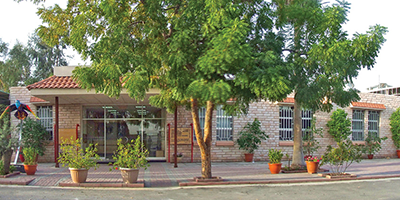Covalent radiusHalf of the distance between two atoms within a single covalent bond. Atomic radius, non-bondedHalf of the distance between two unbonded atoms of the same element when the electrostatic forces are balanced. Murray Robertson is the artist behind the images which make up Visual Elements. This is where the artist explains his interpretation of the element and the science behind the picture.
Chemically, bismuth resembles arsenic and antimony, but is much less toxic.21 In almost all known compounds, bismuth has oxidation state +3; a few have states +5 or −3. Bismuth is a member of group 15 in the periodic table, which is also known as the nitrogen group. This group includes nitrogen, phosphorus, arsenic, antimony, and bismuth, and elements in this group typically have five electrons in their outermost shell. Many cosmetics including lipsticks, eyeshadow and nail polish contain bismuth oxychloride (BiOCl), a pearly powder that makes the products shine, according to Emsley. The word “bismuth” is a Latinized version of an Old German word, “weissmuth” or “white substance,” possibly named after the element’s white oxide, according to Chemicool.
Atomic shell
Its most notable physical property is its density, which is high compared to other metals, contributing to its heaviness. Bismuth is also characterized by its low toxicity compared to other heavy metals, making it a safer alternative in various applications. Bismuth (Bi), one of the heaviest stable elements, is an intriguing metal that possesses unique physical and chemical properties. While it is not as widely known as other metals like iron or copper, bismuth has become increasingly significant in various industrial applications, particularly as a non-toxic alternative to harmful heavy metals. Bismuth is a unique and captivating element known for its striking physical properties and colorful, geometric crystal structures. It is a brittle metal with a white, silver-pink hue often exhibiting an iridescent oxide layer that reflects a spectrum of colors from yellow to blue.
- Bismuth crystals are most famously known for their intricate hopper-like structures, which are stair-stepped hollow pyramidal forms.
- Boiling point The temperature at which the liquid–gas phase change occurs.
- Though bismuth had been known as early as 1400, it was frequently confused with lead because it was similarly a heavy metal with a low melting point, according to the Royal Society of Chemistry.
A large number of radioactive isotopes are known, most of them very unstable. When heated, bismuth interacts with oxygen in the air to generate bismuth (III) oxide, Bi2O3. The number of atoms of the element per 1 million atoms of the Earth’s crust. An integrated supply risk index from 1 (very low risk) to 10 (very high risk). This is calculated by combining the scores for crustal abundance, reserve distribution, production concentration, substitutability, recycling rate and political stability scores. Where the element is most commonly found in nature, and how it is sourced commercially.
Toxicological data
Bismuth is a metallic chemical element that is classified among the group of elements colloquially known as “poor elements” in the periodic table. This element has a number of uses, making it common in industrial applications. Many consumers own products which contain bismuth, although they may not necessarily interact with the element directly. The bulk of the world’s supply comes from South America, and it is also extracted as a byproduct from the smelting of some metals.
Bismuth dissolves in concentrated sulfuric acid, H2SO4, generating SO2, nitric acid, HNO3, and hydrochloric acid, HCl. Bismuth (III) chloride is formed when hydrochloric acid is combined with oxygen. Bismuth interacts with water at high temperatures to generate the trioxide bismuth (III) oxide, Bi2O3. In addition, bismuth is used as an alloying element in solders, particularly in the electronics industry, where lead-free solder is now required by regulations such as the Restriction of Hazardous Substances Directive (RoHS). Compared to other metals, bismuth is the most diamagnetic; that is, it resists being magnetized and is repelled by a magnetic field, according to Chemicool.
Heat and conductivity
It is the most strongly diamagnetic element known, which means it repels magnetic fields. Bismuth, element 83 on the periodic table of elements, is a post-transition metal, according to Los Alamos National Laboratory. Post-transition metals share some characteristics of transition metals but are softer bismuth price chart and conduct more poorly. In fact, bismuth’s electric and thermal conductivity is unusually low for a metal.
The RSC makes no representations whatsoever about the suitability of the information contained in the documents and related graphics published on this Site for any purpose. The percentage of an element produced in the top producing country. Electron affinityThe energy released when an electron is added to the neutral atom and a negative ion is formed.
Chemical Properties
Before modern analytical methods bismuth’s metallurgical similarities to lead and tin often led it to be confused with those metals. The name may come from mid-sixteenth-century Neo-Latin translations of the German words weiße Masse or Wismuth, meaning ‘white mass’, which were rendered as bisemutum or bisemutium. Bismuth is roughly twice as plentiful in the Earth’s crust as gold. Bismuth is most frequently found in a +3 oxidation state, however, it can also occur in a +5 state, also found in +2 and -3 oxidation states, which is quite uncommon. Bismuth +5 compounds like BiF5 and NaBiO3 are well-known, but their synthesis is challenging. Bismuth crystals are very beautiful because the various levels of oxidation disrupt the light wavelengths that reflect on their surface, producing a genuine rainbow of colors.
Chemistry in its element: bismuth
The ecological impact of the increasing use of bismuth remains an area of active research. Reducing the resulting bismuth oxide with carbon yields metallic bismuth. As a general rule, people should avoid swallowing it and they should wash their hands after working with it. Face protection should be worn when melting or cutting bismuth, to avoid the inhalation of harmful fumes and vapors. Since some of its compounds can be toxic, consumers are also advised to follow all safety warnings and directions on products which contain these compounds. Bismuth’s unique properties and striking appearance, both as a raw metal and especially in crystalline form, make it highly prized among collectors, artists, and those interested in its practical applications.
Other uses as compounds
Bismuth subsalicylate is the active ingredient in popular over-the-counter medications like Pepto-Bismol, which is used to treat gastrointestinal issues such as indigestion, heartburn, and diarrhea. Bismuth’s antibacterial properties also make it useful in treating Helicobacter pylori infections, which are responsible for many ulcers. In addition to hydrothermal activity, bismuth may also form during the weathering and oxidation of primary bismuth-containing minerals like bismuthinite.
Separation of bismuth from its oxide or carbonate ores can be effected by leaching with concentrated hydrochloric acid. This, on heating with lime and charcoal, produces metallic bismuth. Bismuth compounds account for about half the global production of bismuth. They are used in cosmetics; pigments; and a few pharmaceuticals, notably bismuth subsalicylate, used to treat diarrhea.
Bismuth was formerly understood to be the element with the highest atomic mass whose nuclei do not spontaneously decay. The metal’s only primordial isotope, bismuth-209, undergoes alpha decay with a half-life roughly a billion times longer than the estimated age of the universe. The principal chemical application of bismuth is in the form of bismuth phosphomolybdate (BiPMo12O40), which is an effective catalyst for the air oxidation of propylene and ammonia to acrylonitrile. Substantial quantities of the oxychloride, BiOCl, have been used to impart a pearlescent quality to lipstick, nail polish, and eye shadow.
- It is also used in fire detection devices, because it has a very low melting point.
- Bismuth has applications in nuclear reactors, particularly as a coolant in lead-bismuth eutectic (LBE) alloys.
- As a post-transition metal that often occurs in the company of heavy metals like lead and tin.
Bismuth has applications in nuclear reactors, particularly as a coolant in lead-bismuth eutectic (LBE) alloys. These alloys, which combine lead and bismuth in specific ratios, have desirable properties such as high density, good thermal conductivity, and relative safety compared to other materials. LBE alloys have been used in nuclear submarines and proposed for next-generation nuclear reactors. Bismuth has been known since ancient times, often confused with lead and tin due to its similar appearance. The German monk Basil Valentine made the first written description of bismuth in the 15th century, although it was known and used earlier.
It has a crystalline chemical structure that makes it extremely brittle, and it is rather unique among the elements for having a liquid state that is more dense than its solid; water shares this interesting property. On the periodic table of elements, bismuth is identified as Bi, and the element has an atomic number of 83. Bismuth has been known since antiquity, with early uses dating back to ancient civilizations. The metal was utilized in alloys and as a component in some traditional medicines.

 تم افتتاحه عام 1979 في منطقة القرهود، دبي، الإمارات العربية المتحدة
تم افتتاحه عام 1979 في منطقة القرهود، دبي، الإمارات العربية المتحدة
 تم افتتاحه عام 1998، في البرشاء، دبي، الإمارات العربية المتحدة
تم افتتاحه عام 1998، في البرشاء، دبي، الإمارات العربية المتحدة
 تم افتتاحه عام 2018 في الخوانيج، دبي، الإمارات العربية المتحدة
تم افتتاحه عام 2018 في الخوانيج، دبي، الإمارات العربية المتحدة





